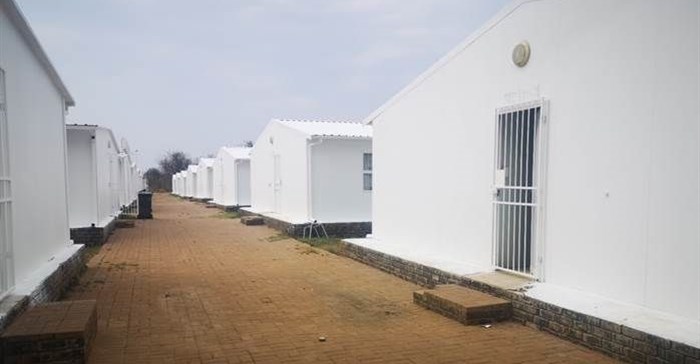South Africa's military bases in Limpopo province are undergoing a large-scale cool-surface paint application project to improve thermal comfort for personnel and reduce energy consumption. This initiative, the largest of its kind in sub-Saharan Africa, marks a significant step towards energy efficiency and potentially national policy changes.

The first trial is being done at military buildings in Limpopo
The project, led by the South African National Energy Development Institute (Sanedi), aims to cover a total of 1.37 million square meters of building surfaces by 2025. As of December 2023, over 366,000m2 have been completed across housing units, schools, clinics, and other military structures.
While seemingly simple, applying cool-surface paint requires more than just a coat of paint. The existing paint needs to be removed, the surface primed, and the new paint applied with a specific thickness.
Kopano Gumbi and Sfundo Parakozov 5 Mar 2024
Dr. Karen Surridge, leading the project for Sanedi, compares the paint's function to sunscreen, "pushing heat and light away from the building."
Upskilling and job creation
The project has not only yielded environmental benefits but also created over 50 new jobs in areas like roofing inspection, painting, and safety protocols.
The next phase is expected to create 100 jobs
Beyond immediate results, the project aims to gather valuable data. This large-scale application allows Sanedi to study the "cool-bubble" effect, where cooler temperatures form around painted buildings.
This data will be used to assess the technology's potential for wider implementation in South African cities and inform future government policies – cool surface paint is understood to be under evaluation by the City of Cape Town in its energy efficiency plans.
Multiple benefits
Cool-surface paint offers numerous advantages beyond thermal comfort. It reduces air-conditioning usage, leading to energy and cost savings.
Additionally, it functions as a waterproofing material and fire retardant, extending the lifespan of buildings and enhancing safety. While initially more expensive than regular paint, its lifespan and reduced maintenance costs justify the investment.
While white paint offers the best cooling effect, even black cool-surface paint provides significant benefits
The project's success is attributed to the collaboration between Sanedi and the Department of Defence.
Dr Surridge highlights the department's commitment to "proving technology effectiveness for the citizens of South Africa."
This initiative paves the way for potential nationwide adoption, contributing to a more sustainable and energy-efficient future.





























